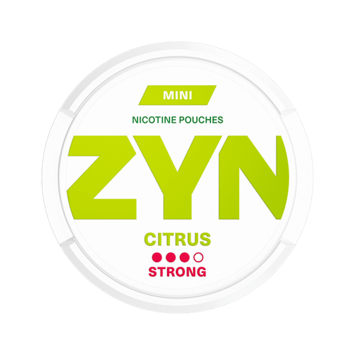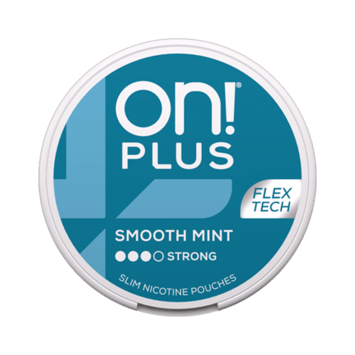Are nicotine pouches bad for you?
Philip Plainstein

Have you ever wondered whether nicotine pouches are as harmless as they seem? Marketed as a safer alternative to smoking, these small, discreet products have gained popularity worldwide. In 2023, ZYN, a leading brand, sold over 350 million cans in the United States alone—a 62% increase from the previous year.
While nicotine pouches are often perceived as a healthier choice due to their “tobacco-free” label, it’s important to understand that risk-free they are not. The absence of tobacco leaves does not eliminate potential health risks, including cancer and cardiovascular diseases. Experts like Alexandra Howell highlight that users are still exposed to harmful chemicals, such as tobacco-specific nitrosamines (TSNAs), which are known carcinogens.
Debates about nicotine usage are ongoing in the UK and internationally, with many questioning the long-term health implications. This article will explore the health impacts of nicotine pouches, separate myths from facts, and discuss whether they truly offer a safer choice for those seeking to quit smoking.
Understanding Nicotine Pouches and Their Rise in Popularity
Nicotine pouches have emerged as a popular tobacco-free alternative to traditional tobacco products. These small, discreet sachets are designed to be placed between the upper lip and gum, offering a smokeless and spitless experience. Unlike conventional smokeless tobacco products, nicotine pouches contain no tobacco leaves, making them an attractive option for those seeking to reduce harm.
What Are Nicotine Pouches?
Nicotine pouches are a type of nicotine product that consists of a small fabric pouch filled with nicotine salts and plant-based fillers. They come in various flavours, from mint to fruity options, appealing to a broad audience. The absence of tobacco leaves underscores their marketing as a harm reduction tool, particularly for smokers looking to quit.
The Ingredients and Nicotine Content Explained
The ingredients in nicotine pouches typically include nicotine salts, flavourings, and inert fillers. A single pouch usually contains between 3mg and 12mg of nicotine, which is lower than the average cigarette containing 10-14mg. However, the nicotine delivery is slower compared to smoking, with blood nicotine levels peaking after about 30 minutes versus 5 minutes for cigarettes.
The rising popularity of nicotine pouches can be attributed to their convenience and perceived safety. In the UK, their appeal has grown significantly, with sales reflecting a shift towards alternative nicotine products. This trend is particularly noticeable among younger adults, with about 16% of individuals aged 15-24 reporting use of these products.
For more detailed information about nicotine pouches, visit our guide: What Are Nicotine Pouches?.
is nicotine pouches bad for you?
Understanding the health implications of nicotine pouches is crucial, especially for those considering them as an alternative to smoking. While they may seem like a safer option, it’s important to delve into the potential risks they pose.
Short-term and Potential Long-term Health Risks
In the short term, users may experience side effects such as gum irritation, mouth sores, and an upset stomach. These issues are relatively common but typically mild. However, the long-term effects are less clear due to limited research over time.
Emerging studies suggest that nicotine can affect brain function, particularly in younger individuals, potentially impacting cognitive development. Experts from Virginia Commonwealth University warn that nicotine addiction remains a significant concern, regardless of the delivery method.
Research Findings and Expert Opinions
Research indicates that while nicotine pouches contain lower levels of harmful chemicals compared to traditional tobacco products, they are not without risks. A 2022 study found that many products contain cancer-causing chemicals like TSNAs, though at lower levels than cigarettes.
Experts emphasize that the brain’s susceptibility to nicotine addiction can lead to long-term health issues, including cardiovascular problems. The lack of comprehensive data makes it challenging to fully understand the extent of these risks.
| Product Type | Health Risks | Nicotine Levels |
|---|---|---|
| Nicotine Pouches | Gum irritation, mouth sores, potential brain effects | 3mg to 12mg per pouch |
| Vaping Products | Respiratory issues, lung injuries | Varies widely |
| Traditional Tobacco | Cancer, heart disease, lung disease | 10mg to 14mg per cigarette |
Balancing the reduced harm of nicotine pouches against traditional smoking is complex. While they may offer a safer alternative, ongoing research is essential to fully understand their long-term impacts. Monitoring your health and consulting a healthcare professional is crucial if you choose to use these products.
Oral and Cardiovascular Health Impacts
Nicotine pouches may seem like a harmless alternative, but their impact on your health is worth exploring. While they offer a smokeless experience, they can still affect your body in significant ways. This section delves into how these products influence your oral health and cardiovascular system.
Effects on Your Gums and Mouth
Using nicotine pouches can lead to gum irritation and mouth discomfort. These side effects are common, especially when first starting. Prolonged use may result in gum recession and other dental issues. Alexandra Howell, a dental expert, notes that the continuous placement of pouches can cause mouth inflammation, potentially leading to more severe oral health problems.
Potential Cardiovascular Concerns Due to Nicotine
Nicotine’s stimulant effects can impact your heart and blood system. It increases heart rate and blood pressure, which may lead to cardiovascular concerns. Compared to traditional smoking, the effects are different but still pose risks. The stimulant properties of nicotine can affect blood circulation, contributing to heart disease over time.
Comparing Nicotine Pouches with Other Nicotine Products
Nicotine pouches stand out among other nicotine products due to their unique form and function. Unlike vaping products, which involve inhaling aerosol, nicotine pouches are placed between the lip and gum for a smokeless experience. This method of delivery sets them apart from both e-cigarettes and traditional chewing tobacco.
Nicotine Pouches Versus Vaping and E-cigarettes
While vaping products deliver nicotine through inhalation, nicotine pouches release it gradually through the mouth tissue. This slower absorption can appeal to those who prefer a more controlled nicotine intake. However, both methods carry risks, with vaping linked to respiratory issues and pouches potentially causing gum irritation.
How They Differ from Traditional Chewing Tobacco
Nicotine pouches are free from tobacco leaves, unlike traditional chewing tobacco. This distinction reduces exposure to certain harmful chemicals. However, they still contain nicotine, which can lead to addiction. The table below highlights key differences:
| Product Type | Health Risks | Nicotine Levels |
|---|---|---|
| Nicotine Pouches | Gum irritation, potential brain effects | 3mg to 12mg per pouch |
| Vaping Products | Respiratory issues, lung injuries | Varies widely |
| Traditional Chewing Tobacco | Cancer, heart disease, lung disease | 10mg to 14mg per cigarette |
Nicotine pouches offer a different profile compared to vaping and chewing tobacco, balancing convenience with potential health impacts. Understanding these differences helps users make informed choices.
Wrapping Up Your Nicotine Pouch Considerations
As you consider whether nicotine pouches are right for you, it’s important to weigh both the benefits and the risks. While they offer a convenient and discreet alternative to smoking, their impact on your health should not be overlooked.
The decision to use nicotine pouches is complex, as their effects can vary greatly from person to person. It’s crucial to think about both the short-term and potential long-term effects. For instance, while they may help you quit smoking, they can also lead to nicotine addiction and other health issues.
Nicotine pouches differ from e-cigarettes and traditional tobacco products in several ways. Unlike e-cigarettes, which involve inhaling aerosol, nicotine pouches are placed between the lip and gum for a smokeless experience. This method of delivery sets them apart from both e-cigarettes and traditional chewing tobacco.
Recent market trends in the United States show a significant increase in the popularity of nicotine pouches, particularly among young people. This rise in popularity has led to concerns about the potential long-term health impacts, especially for those who have never smoked before.
While nicotine pouches may seem like a safer choice, it’s important to stay informed about the latest research and studies. Regular health check-ups and consultations with healthcare professionals can help you make the best decision for your health.
Ultimately, the decision to use nicotine pouches should be made with care. They may be a useful tool for some, but they are not without risks. By considering all the factors and staying informed, you can make a decision that’s right for you.
For more information on the safety of nicotine pouches, visit Cleveland Clinic’s guide or learn more about their impact on heart health at Nicotine Pouches.org.









